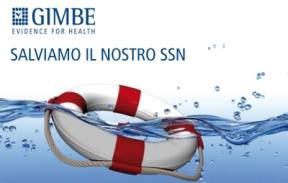All news by therapy
An update on diagnosis and management of obstructive sleep apnoea in the first 2 years of life
Management of obstructive sleep apnoea syndrome (OSAS) in the first 2 years of life is unique and requires consideration of comorbidities and clinical presentation, polysomnography (PSG) results for treatment decisions, and a multidisciplinary approach to treatment with medical and otolaryngology teams.

The authors in this review aim to summarise evidence that became available after publication of the 2017 European Respiratory Society statement on the diagnosis and management of obstructive sleep apnoea syndrome (OSAS) in 1- to 23-month-old children.
The main topics evaluated and discussed in the review are:
Definition of OSAS in the first 2 years of life: reference values for PSG respiratory parameters, OSAS definition and severity classification in children 2 years of age or younger should probably differ from those applied in older children. An obstructive apnoea–hypopnea index (oAHI) >5 events/hour may be normal in the first month of life, as obstructive and central sleep apnoeas decline in frequency during infancy in otherwise healthy children and those with symptoms of upper airway obstruction. In addition to AHI, the effect of additional parameters such as desaturation index, mean oxygen saturation and percentage time with hypoxia on clinical outcomes needs to be evaluated.
Drug-induced sleep endoscopy (DISE): DISE may be useful in selecting the most appropriate surgical intervention in these young children since a combination of dynamic and fixed upper airway obstruction is commonly observed in this age group and may pose a challenge for treatment.
Surgical interventions: Adenotonsillectomy can improve nocturnal breathing in infants and young toddlers with OSAS, and isolated adenoidectomy can be efficacious particularly in children under 12 months of age. Laryngomalacia is a common cause of OSAS in young children and supraglottoplasty can provide improvement in children with moderate-to-severe upper airway obstruction.
Nonsurgical interventions: Children who are not candidates for surgery or have persistent OSAS post-operatively can be treated with nasopharyngeal airway insertion in Pierre Robin
Sequence, positive airway pressure (CPAP or NPPV) to decrease upper airway resistance and promote normal alveolar ventilation. High-flow nasal cannula may be offered to young children with persistent OSAS following surgery, as a bridge until definitive therapy or if they are PAP intolerant.
In conclusion, management of OSAS in the first 2 years of life is unique and requires consideration of comorbidities and clinical presentation along with PSG results for treatment decisions, and a multidisciplinary approach to treatment with medical and otolaryngology teams. Future research are strongly encouraged regarding reference values for respiratory PSG parameters subjects younger than 2 years, outcome of DISE-directed surgery, clinical trials for OSAS treatment in infants with outcomes such as growth and neurodevelopment.
BIBLIOGRAPHY
Polytarchou A, Moudaki A, Van de Perck E, et al. An update on diagnosis and management of obstructive sleep apnoea in the first 2 years of life. Eur Respir Rev 2024; 33: 230121 [DOI: 10.1183/16000617.0121-2023].






